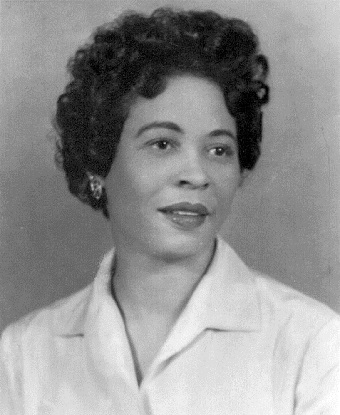
Since black history month is this month here’s one of our black heroes, Daisy Bates!
Daisy Bates is an African American civil rights activist and newspaper publisher. She created the Arkansas Weekly with her husband this newspaper was one of the only African American newspapers dedicated to the Civil Rights Movement. The paper was circulated statewide. Bates not only worked as an editor but also regularly contributed articles. In 1957, Bates helped the Little Rock Nine become the first to attend the all-white Central High School in Little Rock. The first 9 African Americans arrived on September 4th. The group first tried to go to the school on September 4. A group of angry white people jeered at them as they arrived. The governor, Orval Faubus, opposed school integration and sent members of the Arkansas National Guard to prevent the students from entering the school. Despite the enormous amount of hate they faced from white residents of the city, the students were undeterred from their mission to attend the school.
President Dwight D. Eisenhower became involved in the conflict and ordered federal troops to go to Little Rock to uphold the law and protect the Little Rock Nine. With U.S. soldiers providing security, the Little Rock Nine left Bates’ home for their first school day on September 25, 1957. Bates also received numerous threats, but this would not stop her from her work. The newspaper Bates and her husband worked on was closed in 1959 because of low advertising revenue. Her home became the headquarters for the battle to integrate Central High School and she served as a personal advocate and supporter to the students. Bates remained close with the Little Rock Nine, offering her continuing support as they faced harassment and intimidation from people against desegregation.
Three years later, her account of the school integration battle was published as The Long Shadow of Little Rock. For a few years, she moved to Washington, D.C., to work for the Democratic National Committee and on antipoverty projects for Lyndon B. Johnson’s administration. In the mid-1960s, Bates returned to Little Rock. She spent most of her doing community programs until her husband died in 1980. Bates restarted her and her husband’s newspaper, from 1984-1988. For her career in social activism, Bates received numerous awards, including an honorary degree from the University of Arkansas.
She is best remembered as a guiding force behind one of the biggest battles for school integration in the nation’s history. She passed away on November 4, 1999, in Little Rock. Bates is associated with the Daisy Bates House in Little Rock. It is located at 1207 West 28th., in Little Rock. It is a private residence and is not open to the public. The house was listed on the National Register of Historic Places on January 3, 2001. It was also listed on the same day as a National Historic Landmark. In May 2000, more than 2,000 people gathered in Robinson Auditorium in Little Rock to honor her memory. At this event, President Bill Clinton acknowledged her achievements, comparing her to a diamond that gets “chipped away in form and shines more brightly.” In 2001, the Arkansas legislature enacted a provision that recognizes the third Monday in February as “Daisy Gatson Bates Day.”
Thus, her memory (along with those of American presidents) is celebrated on that date as an official state holiday. There are streets in various towns in Arkansas, including Little Rock, which bear her name. In February 2012, PBS broadcast the documentary Daisy Bates: First Lady of Little Rock. In 2019, the Arkansas General Assembly passed a law to replace the statues of Uriah M. Rose and James P. Clarke in the National Statuary Hall Collection at the U.S. Capitol with statues of Daisy Bates and Johnny Cash.









































